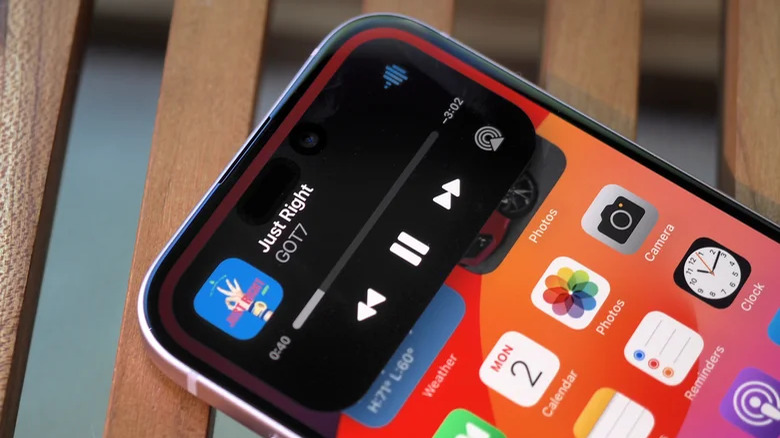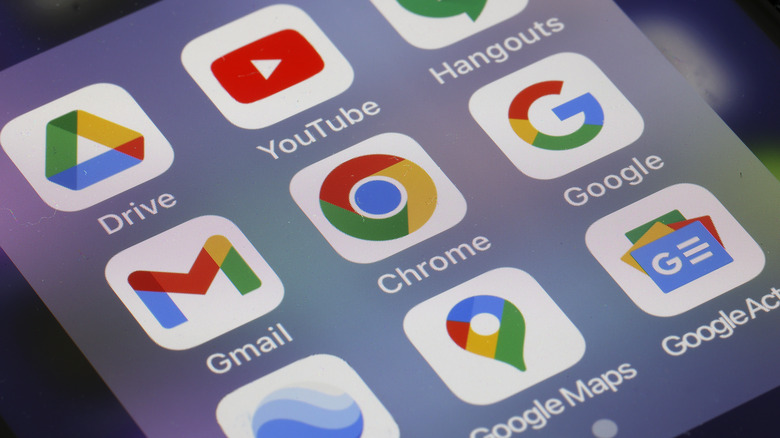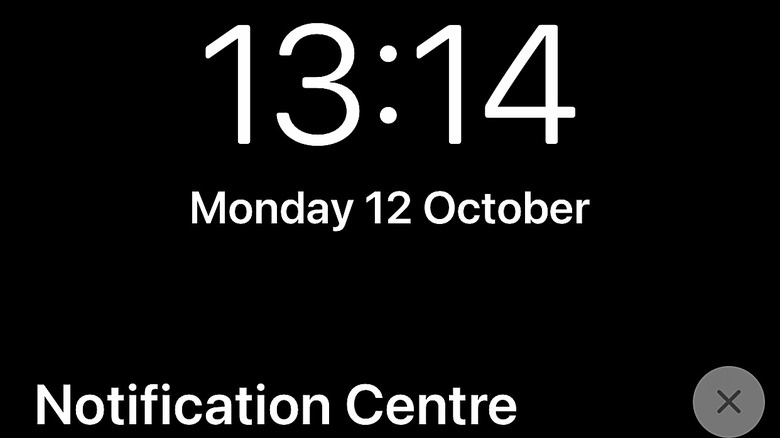Android Vs. iOS: Pros And Cons Of Each Operating System
The smartphone market is, for the most part, dominated by one decision: Android vs. iOS. In the past, it was possible to have a Windows phone, and today you can have a Linux phone, but Android and iOS have stood the test of time as the two phone operating systems with the vast majority of market share.
On the Android front, the allure lies in its diversity. Updated this year to Android 14, the operating system powers everything from budget-friendly smartphones to flagship foldables. This versatility, coupled with an open app ecosystem, empowers users to tailor their devices to suit their individual preferences. However, that freedom comes with its own set of challenges, including device fragmentation and varying software update cycles.
Apple's commitment to a closed ecosystem has plenty of merits. The latest iteration of iOS came in the form of iOS 17 and continues to offer seamless integration between hardware and software. This hallmark of the iOS experience results in a level of optimization that is often unmatched. The rigorously curated App Store offers a streamlined experience focusing on quality over quantity. This exclusivity, though, can limit customization options and potentially leave some users yearning for a more personalized touch.
Both operating systems offer advantages and disadvantages in terms of their features, which means the choice between them extends beyond the allure of flashy features or aesthetically pleasing interfaces. Although neither is necessarily an objectively better choice, there will be one that is better for your needs.
User interface and customization
The most surface-level comparison to be made between iOS and Android is to compare their user interfaces, which generally comes down to a customization versus curation conversation.
Android presents users with a virtual canvas where personalization is at the forefront. The home screen widgets, app launchers, and many themes empower users to transform their smartphones into unique reflections of personal style. Whether it's a minimalist aesthetic or a vibrant, information-rich display, Android allows users to tailor their devices to suit individual tastes. This open ecosystem allows third-party developers to create unique launchers, widgets, and icon packs to meet user needs. However, this abundance of choices can be overwhelming, and the consistency of the user experience may vary between different devices and manufacturers.
iOS embraces a philosophy of simplicity and uniformity. Apple's design ethos revolves around creating an intuitive and consistent user experience across all its devices. The home screen, characterized by a grid of neatly arranged app icons, exudes a clean and minimalist vibe. The controlled environment of iOS ensures a standardized experience, as Apple meticulously curates every aspect of iOS to maintain a cohesive and user-friendly design. While iOS offers less room for visual customization, a streamlined approach has advantages. The interface is often touted for its user-friendliness, making it an ideal choice for many users seeking simplicity.
Applications and sideloading
Apps are the lifeblood of a smartphone, enabling most of their functionality. The kind of app experience you prefer may influence your choice between Android and iOS.
One of Android's standout features is the openness of its app ecosystem. The Google Play Store is home to millions of applications and caters to a broad spectrum of user needs. From mainstream social media platforms to niche productivity tools, Android users enjoy a vast array of choices, reflecting the platform's commitment to inclusivity.
Advanced Android users also have the option to sideload applications from sources other than the designated store, but this flexibility is a double-edged sword. On one hand, it allows users to explore a broader range of applications and experiment with beta versions of their favorite apps. On the other, it introduces potential security risks, as sideloaded apps do not undergo the same rigorous scrutiny as those on the official store.
In contrast, Apple's App Store adopts a more controlled approach, acting as the gatekeeper to the iOS app ecosystem. Each app undergoes a stringent review process to ensure quality, security, and adherence to Apple's guidelines. This curation results in a reputation for a high standard of app quality and a reduced risk of encountering malware or malicious software.
While iOS users may have a more restricted selection compared to Android, the curated environment contributes to a more consistent and secure app experience. The exclusivity of the App Store, however, means that users have limited options when it comes to exploring applications that fall outside Apple's approved catalog. That includes massive apps like "Fortnite," which Apple deleted from the App Store following a dispute over fees.
Web browsers and WebKit
Although many of the sites you frequently visit on your computer will likely have a mobile app, you'll still need to use a web browser for the sites that don't have a dedicated application.
Android, known for embracing app diversity, extends its reach into web browsers. Users on this platform are spoilt for choice, with a plethora of Android browsers available on the Google Play Store, each catering to different preferences and needs. Feature-rich options like Chrome, Firefox, and DuckDuckGo allow Android users to tailor their browsing experience to align with their priorities.
On the iOS side of the spectrum, Safari is the default and, for many users, the primary web browser. Known for its speed, efficiency, and seamless integration with the iOS ecosystem, Safari provides a consistent browsing experience across all Apple devices. All of that said, there are plenty of excellent iPhone web browsers that aren't Safari.
Underpinning both Android and iOS browsing experiences is the WebKit engine, an open-source powerhouse that interprets and renders web content. Originally developed by Apple, WebKit is the force behind Safari and is also used by many other browsers, including Chrome on iOS. This shared foundation ensures a degree of consistency in how web pages are displayed despite the surface-level differences in browser interfaces.
While both Android and iOS leverage WebKit, the implementation details and additional features introduced by individual browsers contribute to the diversity of the browsing experience. Users on Android may appreciate the ability to experiment with various browsers, each with its unique set of features, while iOS users find solace in the seamless integration of Safari into their Apple-centric ecosystem.
Notifications
Notifications allow users to stay up-to-date on anything that may be going on within their applications. An efficient notification enhances user productivity, while a disorganized experience can lead users to miss or forget important notifications.
Android devices offer a range of notification systems. The platform empowers users with granular control over how notifications are displayed, allowing for a tailored experience that aligns with individual preferences. From prioritizing certain apps to controlling the level of detail displayed in each notification, Android users can sculpt their notification landscape as needed. The notification shade provides a centralized hub for managing alerts. Users can expand or collapse notifications, dismiss them individually or in groups, and even respond to messages directly from the notification shade, providing flexibility for users to finely tune how and when they are alerted.
In the iOS camp, Apple adopts a more plain approach to notifications. The Notification Center condenses alerts into a cohesive timeline, presenting a unified view of recent notifications. iOS groups notifications by app, offering a tidy and organized display that some users find less overwhelming than Android's more detailed approach. Although iOS notifications received a huge update with iOS 15, they still aren't up to the level of detail and control found on Android. The emphasis here is on simplicity, ensuring that users can quickly glance at their device and understand the most critical information without being inundated with excessive details.
Privacy
With so much important information in your smartphone, knowing that the device is as privacy-focused as possible is essential. Although absolute privacy isn't possible, there are still some varying strengths to consider for either operating system.
Android, rooted in an open-source foundation, positions user control at the forefront of its privacy narrative. The platform grants users a considerable degree of control over app permissions, enabling them to decide which applications can access sensitive information such as location, contacts, and camera so users can tailor their privacy settings to their comfort level. However, Android's diversity of devices and manufacturers means that the speed and frequency of security updates can vary. Additionally, the open nature of the Android ecosystem introduces potential risks for users who venture outside of the official Google Play Store.
The iOS ecosystem has built a reputation for its stringent approach to user privacy. The closed nature of the platform, coupled with a robust App Store review process, creates a secure and trustworthy environment for users. Apple's App Tracking Transparency feature, introduced in the iOS 14.5 update, puts users in control of whether apps can track their activity across other apps and websites. In addition, iOS devices benefit from timely and consistent software updates, with Apple directly responsible for the release schedule. This centralized control ensures that critical security patches reach users promptly, enhancing the overall security posture of iOS devices.
File navigation
It might seem trivial to worry about what kind of file navigation experience you can expect on your phone. However, for those who do care, it can make an enormous difference in what phone operating system you'll want to use.
On Android, built-in file managers, such as Google Files or third-party options like Solid Explorer, empower users to explore the file system with granularity. Android users can organize their files in folders, move items between directories, and access the root file system on devices with appropriate permissions. This flexibility is particularly appreciated by users who engage in tasks like sideloading apps, transferring files between devices, or managing media libraries. Transferring files to a PC from an Android phone is a particularly pleasant experience that only requires plugging your phone into your computer and navigating to File Explorer.
In contrast, iOS adopts a more simplified approach to file navigation. The Files app serves as the central hub for organizing and accessing files. While users can create folders, move items, and connect to cloud services, the level of granularity in file management is more limited compared to Android. Apple's iCloud integration further streamlines the file navigation experience, allowing users to seamlessly access their files across multiple Apple devices. While this approach aligns with the Apple ecosystem's emphasis on seamlessness, some users may find iOS's simplicity somewhat restrictive.
Background uploading
There are many reasons you could be uploading files from your phone, from offloading files onto a Google Drive or Dropbox to cloud syncing and uploading videos to YouTube. For longer uploads, an important bit of peace of mind to have is that your files will continue uploading when you're not looking. Unfortunately, that isn't always the case.
On Android, you can rest easy when uploading files under the assurance that your files will upload in the background. Google's integration of cloud services, particularly Google Drive and Google Photos, exemplifies Android's approach to background uploading. Photos and files can seamlessly sync in the background, ensuring that users have access to their data across devices. Additionally, third-party apps often leverage Android's background capabilities, offering users a broad spectrum of solutions for their specific uploading needs.
While iCloud backups can easily take place in the background on iOS, some users have reported issues with uploading files in apps such as Dropbox and Google Drive while the app is in the background. While potentially not a big deal for most users, for those who do need that kind of functionality, the lack of it can definitely weigh on a user's experience with their phone.
Multitasking
For many users, their phone isn't used for that much heavy-duty activity, but some power users make their phone a beacon of productivity. One of the most essential features needed for any power user is a good multitasking function.
Android provides users with a flexible multitasking experience that exemplifies flexibility. The platform allows for a wide range of multitasking scenarios, from the traditional app-switching interface to a split-screen view that allows users to run apps side by side. This versatility extends to features like picture-in-picture mode, which enables users to continue watching videos while using other apps. The Recent Apps screen on Android displays a vertical list of recently used applications, allowing users to easily navigate through this list to switch between tasks. These features enhance productivity for tasks that require referencing information from multiple sources.
In the iOS arena, Apple takes a more streamlined approach to multitasking. The App Switcher, accessed by a swipe up or a double-click of the home button, displays a horizontally scrolling list of recently used apps. While iOS lacks a traditional app drawer like Android, it compensates with features like Control Center, where users can access quick settings in a compact form. However, you cannot use any equivalent split-screen on iOS. This marks a huge blow to productivity that could otherwise be possible, especially on the large screens of the iPhone Pro Max lineup.
Unified experience
One thing that can be extremely valuable in an operating system is reliability. There's an assurance in knowing that you'll get the same out-of-the-box experience every time across the same operating system. However, that isn't always the case for Android.
Android faces the unique challenge of unifying the user experience across a multitude of manufacturers, models, and interfaces. Google's vision of a unified Android experience centers around its suite of Google apps and services. The Google Play Store, Google Drive, and Google Photos serve as cornerstones, providing a consistent set of tools for app distribution, cloud storage, and media management.
The Android experience, however, can vary significantly depending on the device and manufacturer. While Google's Pixel devices offer a purer form of Android, other manufacturers often layer their own custom skins and pre-installed apps onto the operating system. This diversity in the Android ecosystem allows users to choose devices that align with their preferences, but it can result in inconsistencies in the overall user interface and feature set. At worst, this can result in receiving a phone with an absurd amount of bloatware.
In the iOS realm, Apple's vision of a unified experience is realized through its tightly controlled ecosystem. The seamless integration of iOS with Apple's hardware, software, and services fosters a cohesive and consistent user experience. Whereas any two Android phones may offer a completely different look across the same version of the operating system, any two iPhones running the same version of iOS will offer largely the same experience.









